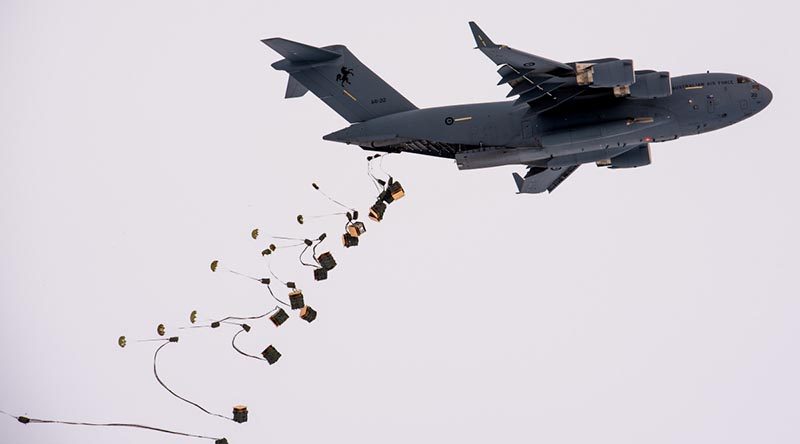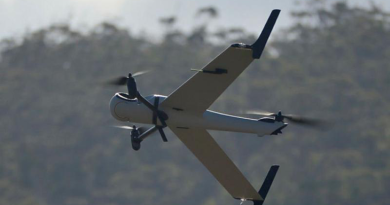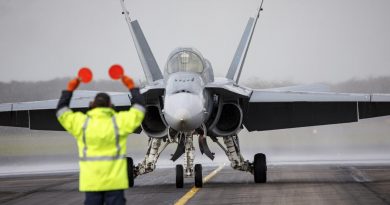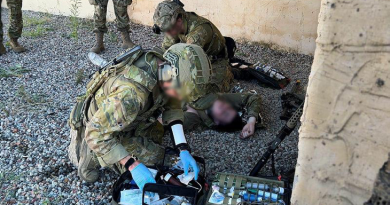C-17 non-stop paradrop in Antarctica

A mid-air plane refuel extended Australia’s ability to reach its Antarctic stations and enabled a pre-season airdrop of supplies to isolated expeditioners, after an RAAF C-17A Globemaster III parachuted supplies into Australia’s Davis research station on 20 September during a 10,000km non-stop round-trip from Avalon airport in Victoria.
CAPTION: A RAAF C-17A airdrops supplies at Davis research station in Antarctica. Photo by Barry Becker, Australian Antarctic Division.
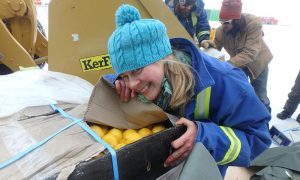
The Globemaster was refuelled by a KC-30A Multi-Role Tanker Transport about half-way through the mission, high above the Southern Ocean.
Australian Antarctic Division Future Concepts Manager Matt Filipowski said the additional fuel meant 9 tonnes of cargo could be parachuted on to the sea ice near Davis research station.
“The airdrop included fresh food, medical supplies and mail for the 17 expeditioners who have spent the past six months wintering at the station,” Mr Filipowski said.
“It’s hoped, in the future, this capability will allow us to pre-position equipment and supplies for station and science projects before the shipping season starts, so it’s all ready to go when the first summer expeditioners arrive.”
RAAF Flight Lieutenant Justin McFadden, who captained the C-17A, said it was the first time Australia has conducted air-to-air refuelling over the sub-Antarctic region.
“We refuelled about 3 hours into the flight at an altitude of 22,000 feet and a speed of 500 kilometres per hour. This allowed us to continue the remaining 4 hours to Davis for the airdrop and return to Hobart,” Flight Lieutenant McFadden said.
“Nearing the drop zone, we descended to 500 feet and slowed to about 270 kilometres per hour, before deploying 15 pallets of cargo in padded containers, each weighing about 700 kg.”
On the ground, Davis Station Leader, Dr Kirsten le Mar and her team had prepared a 1.5 x 1 kilometre drop zone on the sea ice.
“The sea ice was about one metre thick, which is above the 60 centimetre minimum required to drop this weight of cargo,” Dr le Mar said.
“Conditions on the ground were ideal for the airdrop – it was overcast, minus 18 degrees and light winds.
“We’re now enjoying fresh carrots, lemons and potatoes and reading letters from home.”
This new capability will enable the Australian Antarctic Division to airdrop supplies year-round, if required, to all of its Antarctic research stations and deep into the interior of Antarctica.
.
Australian Antarctic Division video.
.
.
.
.
.

.
.

